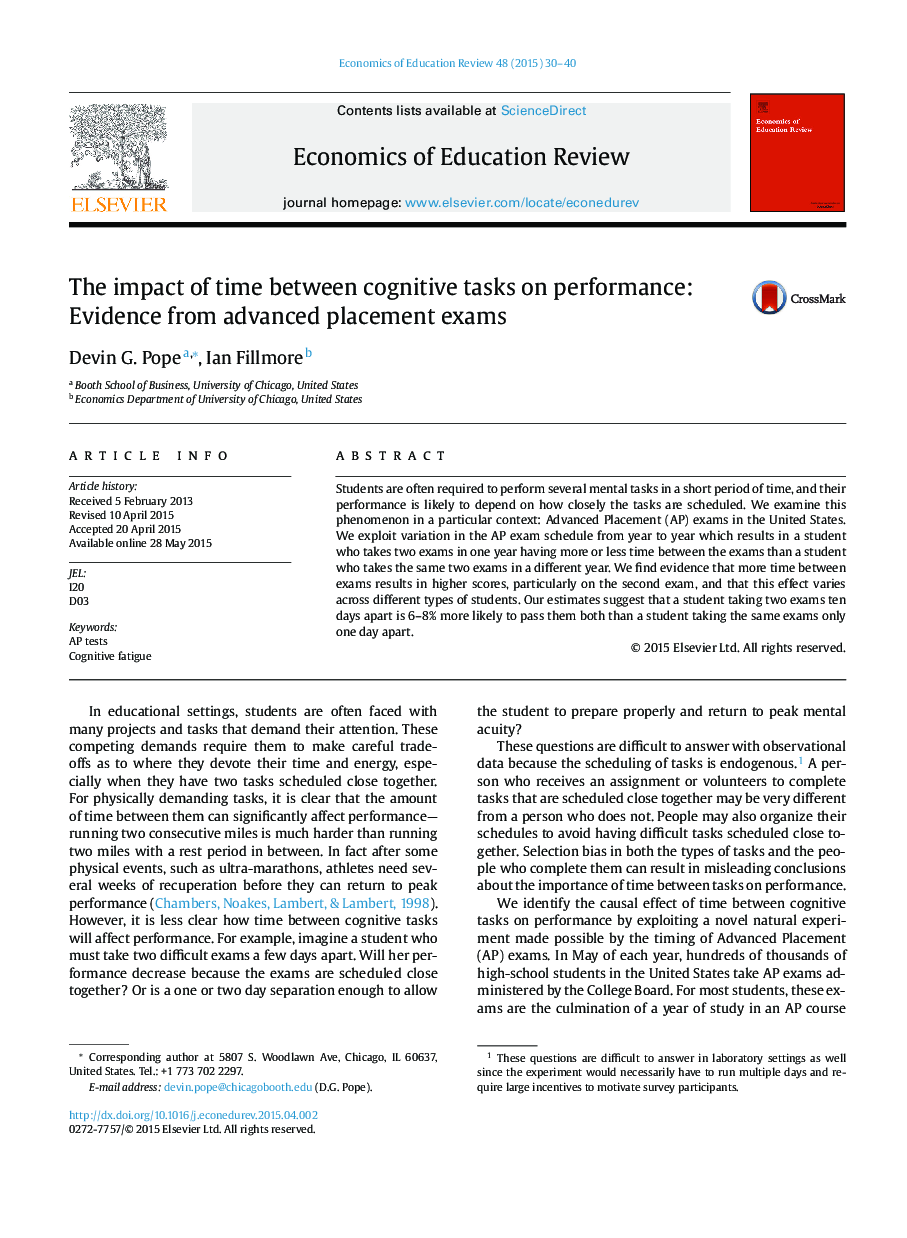| Article ID | Journal | Published Year | Pages | File Type |
|---|---|---|---|---|
| 354349 | Economics of Education Review | 2015 | 11 Pages |
•We analyze data on students who took exactly two AP exams.•Having more days between exams increases student performance.•The effect varies by subgroup.•The effect is driven primarily by the second exam.•Going from one to ten days raises the probability of passing both exams by 6–8%.
Students are often required to perform several mental tasks in a short period of time, and their performance is likely to depend on how closely the tasks are scheduled. We examine this phenomenon in a particular context: Advanced Placement (AP) exams in the United States. We exploit variation in the AP exam schedule from year to year which results in a student who takes two exams in one year having more or less time between the exams than a student who takes the same two exams in a different year. We find evidence that more time between exams results in higher scores, particularly on the second exam, and that this effect varies across different types of students. Our estimates suggest that a student taking two exams ten days apart is 6–8% more likely to pass them both than a student taking the same exams only one day apart.
